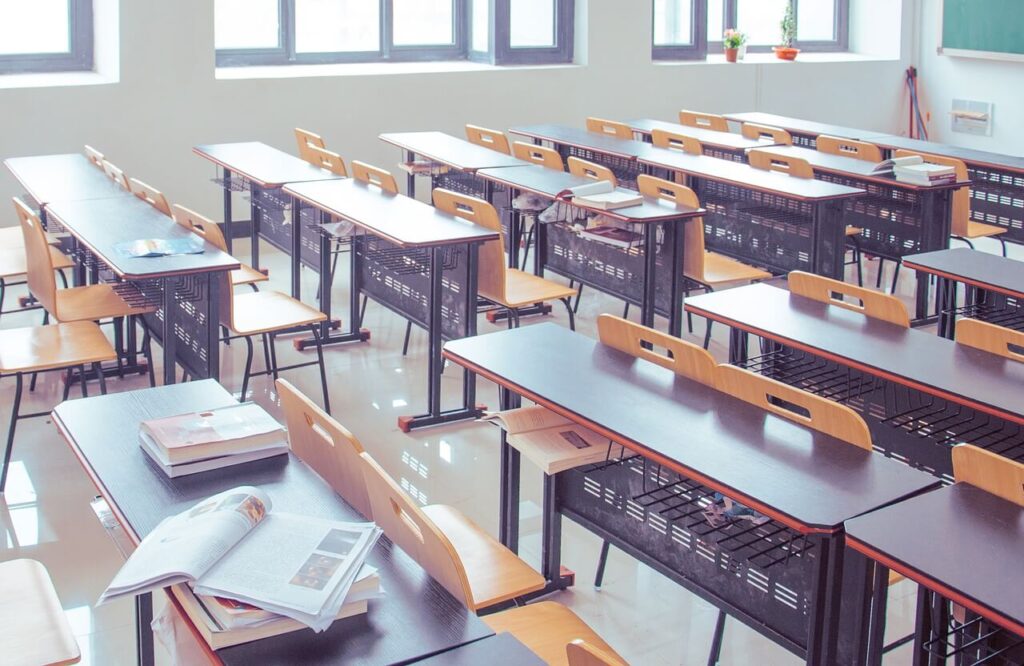The furniture and classroom layout play a significant role in student’s learning and development and are crucial to educators’ productivity. For this reason, it is important ensure that classroom furniture is functional, aesthetically pleasing, and comfortable to foster student learning and educator productivity. This article highlights the ways educational furniture enhances the learning environments for students and teachers.
Fosters Active Learning
The furniture used in a classroom should foster active learning. For instance, standing desks and wobble stools facilitate movement and student engagement. Even affordable plastic stacking chairs can be considered since they can be easily put to the side to give space for movement and physical classroom activities. After all, active learning is known to promote participation, better focus, and sound learning outcomes.
Ergonomic Design
The classroom furniture is often ergonomically designed to ensure the comfort of educators and learners. This ensures proper posture is maintained throughout classroom sessions, minimizing the risk of fatigue or injuries from sitting too long or in an uncomfortable chair. When the students are in a comfortable position while their teacher is discussing a lesson, the tendency is that they will be able to focus more and absorb what is being taught. On the part of educators, when they have a comfortable chair to sit down on when they get tired from teaching or standing too long, they will be able to get the rest they need to be ready to face another classroom session after that.
Flexibility
Many schools now opt for modular furniture that is flexible enough and can be easily rearranged to promote various layouts catering to different teaching styles. For instance, modular furniture can be arranged in a traditional classroom setting as necessary for formal lectures and reporting. These can also be placed in circles for group activities to foster collaboration and positioned on the sides for an open classroom layout if an activity needs to be accomplished. Classroom furniture should be flexible and adaptable to accommodate different teaching and learning styles for the best outcomes.
Space Optimization
Many classrooms have limited space, just enough to accommodate a few students. But even with a limited floor area to work with, the furniture chosen for the school can still make a big difference in fostering effective learning. In this case, seating capacity can be maximized with custom furniture designed for specific classrooms with minimal space. Even clutter can be eliminated with minimalist furniture that creates a cozy but welcoming space conducive to learning.
Aesthetic Appeal
When students walk into the classroom, they often notice the chairs since they need to find their seats. Aesthetically pleasing chairs will provide a welcoming ambiance that will make students feel comfortable in the classroom. With this, they will be able to start a path with the right attitude to an enjoyable experience in learning. Stimulating furniture designs also offer an inviting and motivating learning environment that encourages creativity for learners and educators.
Durability
Safety is paramount in the classroom environment, and durable furniture is critical. For instance, the chairs in the classroom should be durable enough to withstand the weights of the students who will use them. Similarly, the desks should also be sturdy, not easily breaking when tapped into, to minimize the risk of accidents. With high-quality furniture withstanding the rigors of daily use, educators and students would focus on the topics in their classes rather than their safety because of damaged or easily breakable chairs and tables.
Integration of Technology
Schools should be able to adapt and equip classrooms with furniture integrated with technology to foster their students’ learning and their educators’ productivity. Furniture now has built-in charging features, allowing students to charge the devices they use for school work. Some even have integrated power outlets. Educators also leverage mobile furniture pieces, supporting their need to move freely around the classroom to facilitate genuine student interaction.
Storage Solution
Finally, furniture designed with storage solutions also enhances the learning environment for students and teachers by providing avenues for them to be organized with the learning materials they need to utilize. Bookshelves and storage bins integrated into classroom furniture make school supplies and books easily accessible to students when needed. The entire classroom will also benefit from this type of furniture as it will be more organized and conducive to learning.
Tips for Choosing the Right Classroom Furniture
Now that you know how classroom furniture impacts the learning environment of students and teachers, it’s time to consider the factors you need to consider when choosing the right furniture.
- Educational Goals and Teaching Method: When choosing classroom furniture, you must first consider your academic goals and teaching method. For instance, if you want to foster collaboration through group work, opt for modular furniture that can be rearranged accordingly.
- Classroom Layout: The next thing you need to consider is the classroom layout, encompassing its size so that the furniture you opt for will fit perfectly. Opt for space-saving options to give the classroom a bigger feel if possible.
- Comfort and Ergonomics: Students can learn better if they are comfortable in the classroom. One way to ensure this is by opting for ergonomically designed furniture to ensure comfort. Think about the age group of the students using the furniture to assess their comfort.
- Sturdiness and Safety: Only opt for high-quality furniture that can withstand daily use. This way, the last thing you need to think about is whether the chair is prone to breakage since you are confident of the material used.
- Maintenance and Cleaning: Consider the effort required to maintain and clean the furniture. With the many tasks that need to be accomplished in the classroom, keeping up with the maintenance of the furniture should not take much of your time.

Classroom furniture enhances the learning environment for students and teachers by fostering active learning. It is also designed to be ergonomic and flexible to cater to various classroom layouts optimally. With its aesthetic appeal and durability, as well as the integration of technology and storage solutions, these pieces of furniture play a crucial role in creating a conducive learning environment that enhances the experience of both students and teachers.








